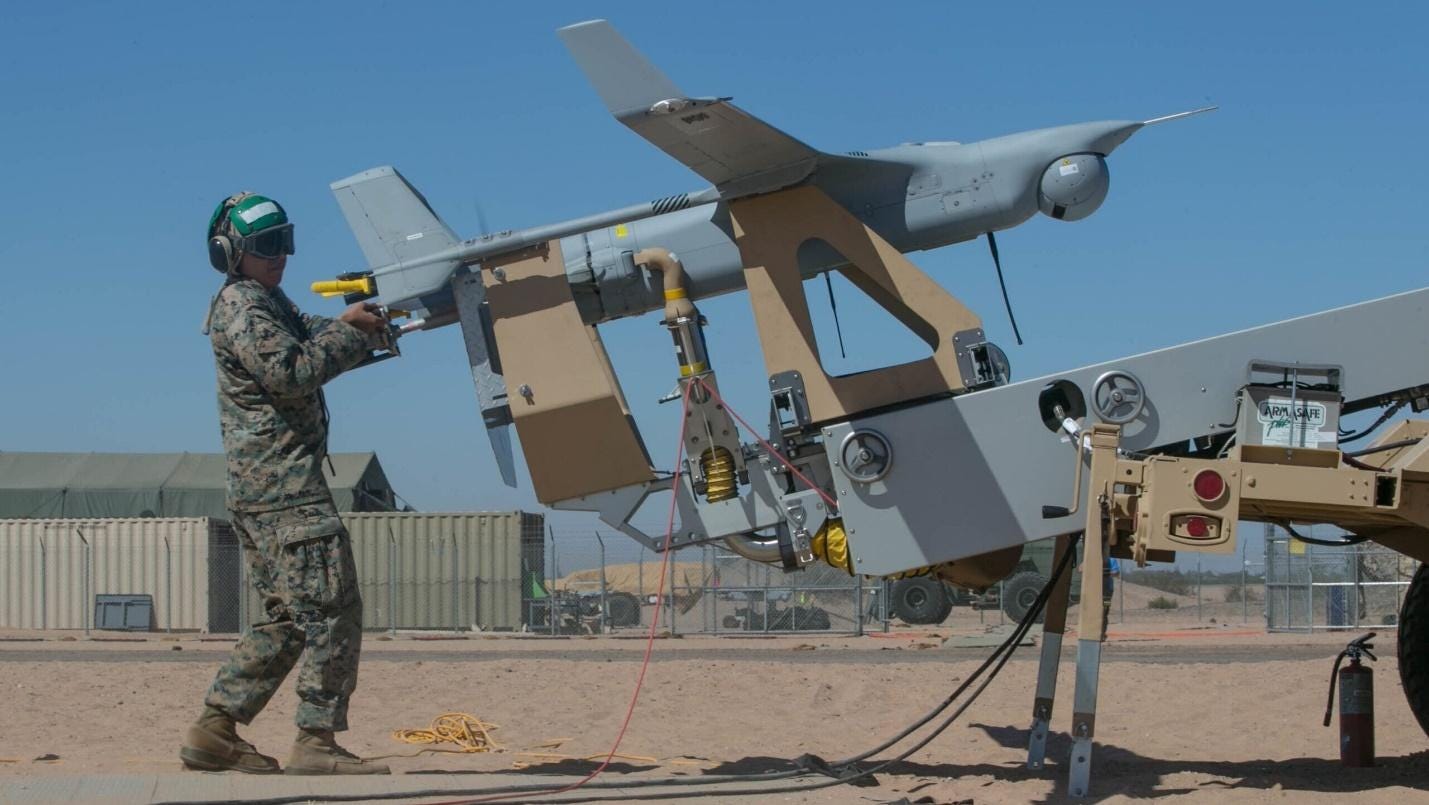Defense Times reported that the U.S. Air Force has noticed its intention to move forward on the concept of launching unmanned drones from the ground or from C-130 transport aircraft that have the ability carry and deploy swarms of smaller drones.
The United States is the world’s Autonomous military technology master. But failure of the world’s most expensive military is on display as a complete failure in Ukraine, due to an institutional inability tie technical advances to procurement speed to market.
Russia’s in the last nine months by massively proliferating inexpensive and very deadly FPV — “first person view” — drones across a 1,000 mile frontline has negated the trillions of dollars American taxpayers spent over the last two decades to achieve military battlespace dominance. Cheaply procured Russian drones can now see up to 30 kilometers and kill more Ukrainian soldiers than any other U.S. or NATO system.
Northrup Grumman began work on the X-47B fighter-sized tailless unmanned aircraft as part of the U.S. Navy's Unmanned Combat Air System program in 2007. The drone performed the first-ever Autonomous carrier-based launches and recoveries in 2013, and made aviation history in 2015 by successfully conducting the first-ever Autonomous Aerial Refueling of an unmanned aircraft. After $1.5 billion funding and meeting every performance goal, the X-47B program was cancelled to focus on MQ-9 Reaper drone.
The U.S. Air Force has spent over $12 billion to buy 366 MQ-9 Reaper drones at a cost of $32 million each, then convinced its NATO allies United Kingdom, Italy, France, Spain, Poland, Netherlands, Canada, and Belgium to buy hundreds of Reapers. But Reapers are considered too valuable to risk being shot down by Russians in Ukraine.
U.S. Air Force MQ-9 Reaper drones have been flying over the Red Sea for the last year in an effort to protect commercial shipping from attacks by Houthi rebels in Yemen, which is the poorest nation in the world an annual personal income of $302 according to the United Nations. Houthis that often travel by camel, recently shot down two Reapers.
Raytheon Technologies and Northrop Grumman first successfully demonstrated the ability for a single user to control over 150 unmanned systems as part of a swarm attack in an urban battlefield setting in January 2022. The experiment was part of the Defense Advanced Research Projects Agency’s OFFensive Swarm-Enabled Tactics (OFFSET) program, which envisioned smaller units able to amass up to 250 small aerial and ground unmanned systems in urban areas.
Unfortunately, the South China Morning Post reported in March 2024 that “Chinese scientists have developed a new type of war drone that can rapidly multiply midair, a tactical shock and awe phenomenon against potential adversaries like the U.S.”
The Chinese drone swarm system appears similar to the American OFFSET system. The major difference is the Chinese are tweaking their off-the-shelf DJI consumer-grade multirotor drone technology, by incorporating the ability of each drone to split into two, three or even six smaller drones depending on the command, surveillance, tracking, and attack needs. Each drone in the Chinese swarm has only one blade, but can hover and move freely like a regular drone, or communicate and swarm and with other drones.
The U.S. Air Force gave notice on Jul 10, 2024 that they are now ready to seek industry feedback for potential production of a “Swarm Carrier” uncrewed aircraft system capable of launching from a C-130 and deploying drones of its own. There is no information provided in the notice regarding when system procurement would begin.




